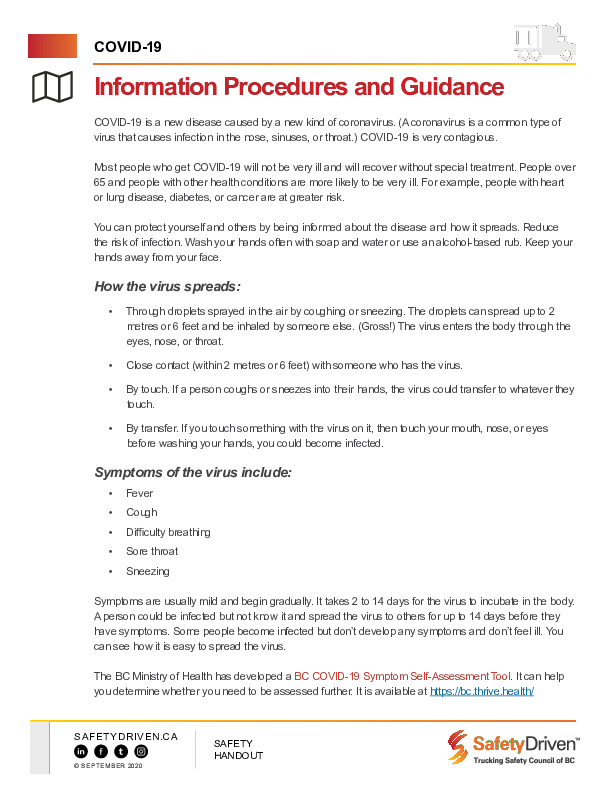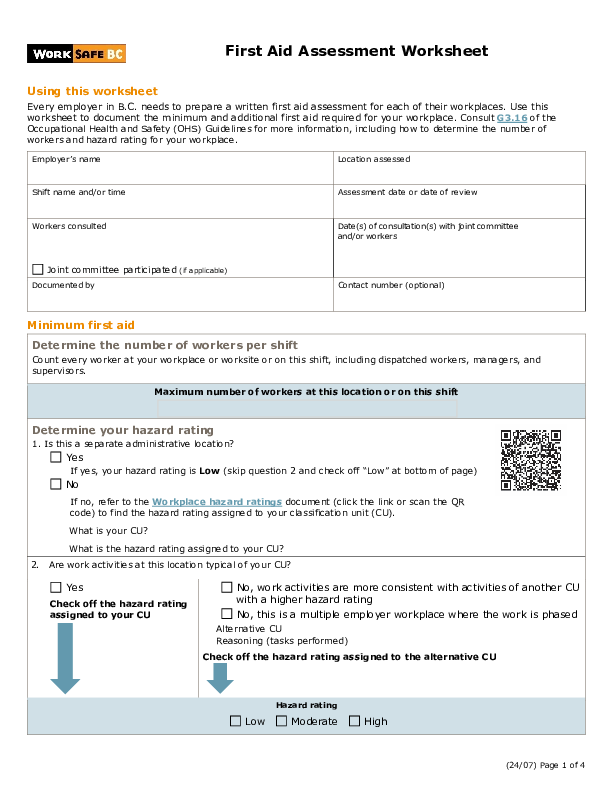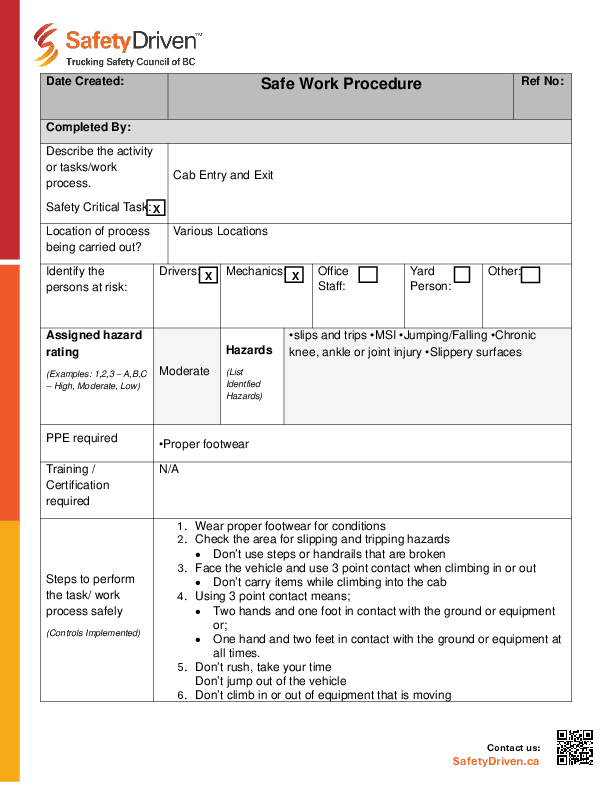
Information Procedures and Guidance
Type:
Safety Handouts
COVID-19 is a new disease caused by a new kind of coronavirus. Read this guide to find out more about the disease, how it spreads and how to prevent it.
Latest Resources
For Managers / Supervisors
First Aid Assessment Worksheet
Every employer in B.C needs to prepare a written first aid assessment for each of the ...
Templates & Forms
+
For Managers / Supervisors
Safe Work Procedure: Cab Entry & Exit
An Employer can make use of a safe work procedure (SWP) by training new and existing ...
Safe Work Procedures
+

